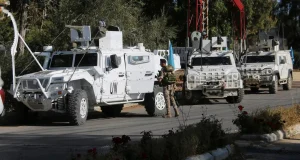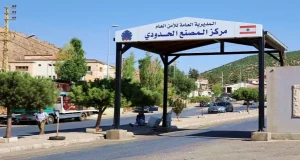Governments control fiat money supply and issue policies from time to time that affects their value. Fiat money is a currency that a government has declared to be legal tender, but is not backed by a physical commodity. The term derives from the Latin fiat (“it shall be” or “let it be done”) as fiat money did not spontaneously emerge in the free market, but it was established by government regulation or law. Contrary to commodity money, which is money that is at the same time a commercial commodity, fiat money is a legal claim, which derives all its properties https://www.finanzen.net/nachricht/aktien/beaxy-taps-blockdaemon-for-node-infrastructure-10510040 from the law. It is neither a commercial commodity, nor a title to any such commodity, so it is irredeemable paper money without any intrinsic value. To summarize, no cryptocurrency could ever be practical as money if it does not have a stable value, but if its value is stable, then no one would buy it because there would be no reason to get a cryptocurrency with no fiat value. Furthermore, using cryptocurrencies extensively in any major economy would eliminate some of the monetary policy tools that central banks use to regulate the economy.
Gold is relatively finite money, and the government cannot create more whenever they want to, thus lessening inflation. In the context of economic distress and quantitative easing, Satoshi Nakamoto used the blockchain technology and created Bitcoin, the first Cryptocurrency. Within his whitepaper, he argued for a new monetary system that won’t be controlled by the government, has a fixed amount which cannot be exceeded, and gives people absolute control over their funds. Loss of trade power, embargo, international economic sanctions, disproportions between imports and exports, and financial policies can affect the value of a fiat currency. Since antiquity, gold qualified as a great medium of exchange, a unit of account, and a store of value. Governments introduced this type of money as an alternative to representative and commodity money. Commodity money is, for example, a valuable metal such as gold that we use as currency. Unlike Fiat currencies, cryptocurrencies are not controlled by any central authority such as a central bank.
Backed By Government
In a real gold standard, the primary monetary unit is backed by the specific weight of Gold alloy of particular purity or equivalent in fine Gold, and prices are expressed in the unit or some fractional units upon it. Cash is a government monopoly; the government offers to convert gold bullion into “full-bodied” gold coins, serving either the standard company; itself or multiples of fractions thereof, in unlimited amounts. This policy of providing for the complete issuing of gold bullion is known as “free” coinage. Thus, money is created through public demand to convert bullion to coin. Between 1870 and 1879, numerous countries incorporated gold monometallism. Fiat money only has value because fiat currency vs commodity currency the issuing government maintains that value and the communities involved give it value. Historically, governments would create currency using a valuable physical commodity, such as gold or silver, or print paper money that people could redeem for a set amount of a physical commodity. Fiat money, in a broad sense, all kinds of money that are made legal tender by a government decree or fiat. The term is, however, usually reserved for legal-tender paper money or coins that have face values far exceeding their commodity values and are not redeemable in gold or silver. Fiat Money is a kind of currency, issued by the government and regulated by a central authority such as a central bank.
Fiat currency may not be an effective store of value for long periods of time due to inflation and value erosion. Because they are centralized, fiat currencies reach consensus easily. At first glance, you may think inflation is bad and deflation is good. Most economies around the world are based on spending, and that requires money https://www.marketscreener.com/news/latest/Beaxy-Taps-Blockdaemon-for-Node-Infrastructure–36365447/ to move around in the market. Therefore, we define commodity money as money made out of a commodity, from whom it draws intrinsic value. New France, today part of Canada, began issuing paper money in 1685. Although the UK cut its ties to gold, it was still intrinsically linked to it through the Bretton Woods agreement of 1944.
Etymology Of Fiat Money
The value of this money, be it in the form of a paper note or coin, is not tied to any physical commodity. Instead, it is determined by supply and demand and the stability of the government backing it. The most dominant fiat currencies are the US dollar, the Euro, the Japanese Yen, and the British Pound Sterling. However, this wasn’t always the case; money evolved through multiple stages before taking the form it has today. Almost all major economies have central banks that regulate the supply of money. A central bank can increase or decrease the money supply according to the needs of the economy. If there is too little money for the economy, then the money becomes more valuable, so people hoard it, thereby contracting the economy. This is the primary disadvantage with any type of currency in limited supply, be it gold or cryptocurrency. Commodity money, on the other hand, is money that derives its value from a commodity of which it is made. For example, commodities that are used as a medium of exchange include, copper, gold, silver, large stones, alcohol, tobacco, cigarettes, cocoa beans and barley.
While all currencies experience some inflation, most of this inflation is low and predictable. But if the value of currency fluctuates widely, then its utility as money declines dramatically. This is why Bitcoin will never serve as a currency for major economies and why virtually every country in the world has moved away from the gold standard and why they will never return. A fiat-money currency greatly loses its value should the issuing government or central bank either lose the ability to, or refuse to, continue to guarantee its value. Some examples of this are the Zimbabwean dollar, China’s money during 1945 and the Weimar Republic’s mark during 1923. A more recent example is the currency instability in Venezuela that began in 2016 during the country’s ongoing socioeconomic and political crisis.
Learn To Trade
Soon, they also realized that different items or services had different values. A trade could only be completed if both parties had an item that each wanted . When you buy something with fiat currency, you need to rely on a trustworthy authority such as the European Central Bank or governmental institution to serve as an intermediary that vouches for the currency’s worth. Cryptocurrencies share many similarities with conventional fiat money, but also offer some interesting advantages. Trickle-Up Economics Describes the best tax policy for any country to maximize happiness and economic wealth, based on simple economic principles. Inflation also limits money as a unit of account because prices are continually increasing so it is difficult to compare prices that are constantly changing. Gold is universally accepted by most cultures as a means of payment because it is relatively scarce, and new supplies are difficult to find and mine. Being the most malleable and ductile of metals, it can also be easily cut into different sizes to correspond to specific values. Prices provide information for consumers and producers who allocate economic resources to their most desirable uses. Items in demand command a higher price relative to the costs of the resources to produce them, which induces sellers to provide more of those items.
Will Dogecoin ever reach $1 2020?
Fiat currency has value because the currency is backed by a government, and the people who hold it agree to its worth. Since fiat money isn’t tied to valuable commodities like rare metals or oil, governments, or more accurately central banks, can limit the supply of their currencies to help protect their value.





